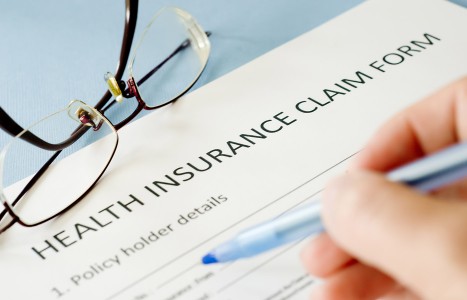When we talk about fertility, the focus is often placed on the ovaries and the uterus. Yet sperm-related factors contribute to nearly half of all cases of infertility. Whether someone is navigating fertility care alone or with a partner, and whether building a family through intercourse, IVI, IUI or IVF, it’s vital to include sperm health in the picture.
Surveys Confirm the Safety of Acupuncture
When asked why they use alternative forms of care, one of the most common responses people give is safety. Because treatments such as acupuncture and herbal medicine are considered more "natural" and less invasive than drugs, surgery or other conventional methods, there is a natural perception that these methods are also safer, and that alternative care patients are less likely to suffer an adverse reaction than those treated with conventional medicine.
For decades, members of the alternative and conventional health care arenas have argued that their method of care is safer. Only in the past few years, however, has any scientific evidence emerged to support the contentions of either side. The latest case in point: a pair of studies published in the September 1 issue of the British Medical Journal,1,2 which examined the incidence of adverse events in patients during and immediately after acupuncture treatment.
The first study, led by Dr. Hugh MacPherson of the Foundation for Traditional Chinese Medicine, consisted of a postal survey sent to more than 1,800 practicing acupuncturists who were members of the British Acupuncture Council. Practitioners were asked to document any event they considered "significant" during a four-week span, including any event that was "unusual, novel, dangerous, significantly inconvenient, or requiring further information." In addition, the practitioners were asked to provide personal information, including age, length of training and years in practice.
A total of 574 acupuncturists participated in the survey, accounting for 34,407 treatments. The average age of a practitioner was 44.8, with 62% having practiced for more than five years. Of the more than 34,000 treatments performed, no serious adverse events (defined as events that required patient admission to a hospital; led to permanent disability; or resulted in death) were noted; only 43 significant adverse events were documented, resulting in a rate of 1.25 adverse events per 1,000 treatments (see Table I).
| Table I: Details of "significant" adverse events associated with acupuncture treatment, MacPherson study. | |
| Adverse event | # of occurrences |
| Unexpected, severe, and prolonged aggravation of existing symptoms | 7 (1 case each of increased shoulder pain, increased neck/shoulder pain, constipation, difficulty walking, morning sickness, diarrhea, and aggravated neck pain) |
| Severe nausea | 5 |
| Prolonged and unacceptable pain and bruising | 5 |
| Fainting | 4 |
| Psychological and emotional reactions | 4 |
| Severe dizziness | 1 |
| Heavy sweating | 1 |
| Vomiting | 1 |
| Avoidable errors | 3 (2 cases of failure to remove a needle, 1 case of burn due to moxibustion) |
| Miscellaneous/unspecified symptoms | 12 |
In approximately 15% of treatments, practitioners also recorded instances of "mild transient reactions." These ranged from positive reactions, such as patients feeling relaxed (4,098 instances) or energized (2,267 instances), to mild bruising, pain and bleeding at the site of needling (587, 422 and 126 instances, respectively). Some treatments caused patients to experience an aggravation of existing symptoms, but 86% of these cases were followed by an improvement.
Even given the "potential bias of self reporting," the researchers concluded that the study provides "important evidence on public health and safety" given the fact that acupuncturists deliver approximately two million treatments a year in the United Kingdom. They added that comparing the adverse event rate of acupuncture to drugs commonly used in the primary care setting "suggests that acupuncture is a relatively form of treatment," and recommended further studies be conducted.
The second survey was performed by Dr. Adrian White and colleagues at the University of Exeter. Participants consisted not of acupuncturists, but members of the British Medical Acupuncture Society and the Acupuncture Association of Chartered Physiotherapists. The survey group consisted of fewer practitioners (78), but treatments were tracked over a longer period of time (June 1998 to February 2000). Practitioners were asked to report any adverse events they encountered while providing care. "Significant" adverse events were judged on the same criteria as in the MacPherson survey, while minor events were defined as "any ill effect, no matter how small, that is unintended and non-therapeutic, even if not unexpected." Anonymous reporting was accepted, meaning that providers could submit adverse event reports without revealing their name.
A total of 31,822 consultations were given over the course of the survey. No serious events were noted, but 43 "significant" events were reported, averaging out to 1.35 adverse events per 1,000 treatments. All adverse events appeared to resolve within one week, except for one incident of pain that lasted two weeks, and one incident of "sensory symptoms" lasting several weeks. Fainting was the most common significant adverse event; in five instances, the practitioner either lost or forgot to remove a needle.
An additional 2,135 "minor events" were reported, the most common of which were bleeding and pain related to needling. In approximately 300 instances, there was an aggravation of existing symptoms; in 70% of these cases, there was a subsequent improvement in the condition.
| Table II: Details of "significant" adverse events associated with acupuncture treatment, White study. | |
| Adverse event | # of occurrences |
| Neurological and psychiatric problems | 8 (2 cases of headache, 2 cases of anxiety and panic, 1 case each of euphoria, hyperasthesia with numbness, slurred speech and seizure) |
| Administration problems | 7 (5 cases of lost or forgotten needle, 2 cases of patient being forgotten in treatment room) |
| Application site problems | 7 (3 cases of pain at site of needle insertion, 2 cases of needle allergy, 1 case each of blister following moxibustion and cellulites) |
| General problems | 7 (2 cases each of drowsiness, disorientation and lethargy, one case of patient falling asleep during treatment) |
| Fainting | 6 |
| Exacerbation of symptoms | 5 (1 case each of back pain, fibromyalgia, migraine, vomiting and shoulder pain) |
| Nausea | 2 |
| Vomiting | 1 |
Competency, Not Experience, Appears to Be the Determining Factor
Combined, the two studies examined the incidence of adverse events associated with more than 66,000 acupuncture treatments, Only 86 "significant" events were reported, averaging to a rate of one adverse reaction for every 770 treatments. These figures, as well as those related to bleeding and pain associated with needle insertion, are statistically similar to previous studies regarding adverse reactions associated with acupuncture.3-5
Comparison of the two studies revealed some interesting differences in treatment, however. For instance, even though a higher percentage of medical doctors and physiotherapists had been practicing acupuncture for longer than five years (71% compared to 62% for the acupuncturists), the odds of a significant adverse event occurring were slightly higher when acupuncture was performed by a physiotherapist or MD.
In addition, there was a higher incidence of patient bleeding during treatment, and more cases of preventable errors - particularly losing a needle or failure to remove a needle - in the MD/physiotherapist survey, even though the number of participants in that survey was far fewer than the number in the MacPherson survey. This suggests that even though medical doctors may have been practicing acupuncture longer, such longevity does not necessarily equate to increased competency. It also suggests that - at least in Great Britain, if not elsewhere -- the level of training and education MDs and physiotherapists receive in acupuncture may not be up to the same standards undertaken by licensed acupuncturists.
In an accompanying editorial,6 Dr. Charles Vincent, a professor of psychology at University College London, noted that looking at only the negative side of acupuncture treatment - in this case, adverse effects - can put such therapy in a rather limited perspective. "The balance of risk and benefit is the key for patients and for those regulating or funding health care," he said, adding that for many conditions, "the balance of risk and benefit for acupuncture remains to be determined."
Despite these limits, Vincent expressed his encouragement over the surveys, hailing them as a "serious and systematic attempt" from the acupuncture profession at addressing the issue of patient safety, and concluded that when practiced by a trained professional, acupuncture is a safe and effective form of treatment.
"The conclusion that acupuncture is a very safe intervention in the hands of a competent practitioner seems justified on the evidence available," he said. "While the risks of acupuncture cannot be discounted, it certainly seems, in skilled hands, one of the safer forms of medical intervention."
References
- MacPherson P, et al. The York acupuncture safety study: prospective survey of 34,000 treatments by traditional acupuncturists. BMJ September 1, 2001;323:486-7.
- White A, Hayhoe S, Hart A, et al. Adverse events following acupuncture: prospective survey of 32,000 consultations with doctors and physiotherapists. BMJ September 1, 2001;323:485-86.
- Yamashita H, et al. Incidence of adverse reactions associated with acupuncture. Journal of Alternative and Complementary Medicine 2000;6(4):345-350.
- Ernst E, White AR. Prospective studies of the safety of acupuncture: a systematic review. Am J Med 2001;110(6):481-5.
- Bensoussan A, et al. Risks associated with the practice of traditional Chinese medicine. Archives of Family Medicine Nov/Dec 2000;9:1071-8.
- Vincent C. The safety of acupuncture. Acupuncture is safe in the hands of competent practitioners. BMJ September 1, 2001;323:467-8.


